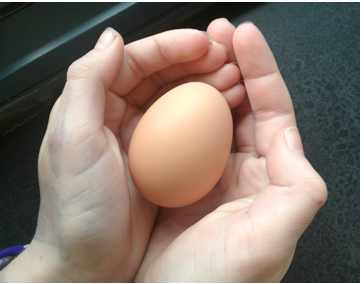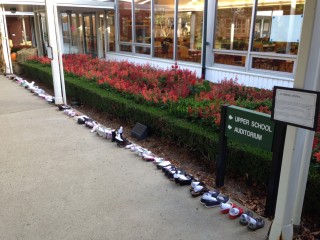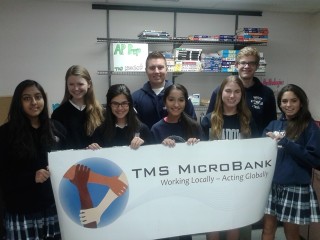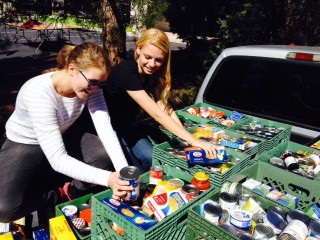The Philadelphia wind is harsh; it is seven-fifteen on a Monday morning in early April. The unzipped jackets of middle school girls flap open against their uniform shirts. They’re carrying buckets of water, a small brown basket lined with a blue kitchen towel, a plastic pail of layer’s grain, a handful of spinach, one shovel, one rake, and armfuls of straw. One fifth-grader has my key ring in her pocket; next to a house key, a car key and a classroom key is, now, one that fits the small wooden door to, yes…a hen house. Until this point, the primary way to raise any sort of funds has been through bake sales. In beginning to understand the unyielding nature of hunger and its effects on people everywhere, the girls raised much of their own money and eventually were able to purchase four hens and the brown house. By marketing and selling fresh eggs, their goal was to establish micro-financing grants for women in other countries as well as add to efforts against hunger in Philadelphia. Striking the passionate balance between doing something now and building solid knowledge, they have partnered with schools through iEARN (International Education and Resource Network) and Kids Can Make A Difference (KIDS) to learn about the root causes of hunger and poverty, about food growth and distribution in differing neighborhoods and countries, about poverty affecting the foods to which people have access. They understand, now, that education for children does not happen when there is hunger. They have come to understand that micro financing can be a tremendously important factor in improving the lives of women and their children. Their efforts are as important as the many other 21st century skills that are as much a part of classroom learning as reading and writing⎯compassion for others, citizenship in a shared world, and integrity of action.
Along with knowledge has come action…one idea, one egg, and one green shoot at a time.



